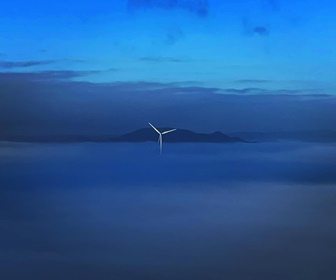WindEurope has published its annual statistics and seven-year outlook, indicating that the European Union's wind energy target for 2030 is attainable. In 2023, the European Union added 16.2 GW of new wind energy capacity, with 79% being onshore wind. Over 1 GW was contributed by the repowering of old turbines.
Germany led in new capacity installations, followed by the Netherlands and Sweden. Wind energy accounted for 19% of total EU electricity consumption in 2023, with solar contributing another 8%. Renewables as a whole constituted 42% of the electricity mix. Wind electricity generation in the EU reached 466 TWh, up from 412 TWh in 2022.
WindEurope forecasts that the EU will average 29 GW of new installations annually from 2024 to 2030. This trajectory would bring the EU's installed wind capacity to 393 GW by 2030, compared to the 425 GW required to meet Europe's climate and energy targets.
From 2024 to 2030, approximately two-thirds of new installations are projected to be onshore, although offshore wind installations are expected to increase rapidly towards the end of the decade. By 2030, new offshore installations are anticipated to match new onshore installations.
Permitting processes are showing improvement, with significantly more permits granted for new onshore wind farms in 2023 compared to previous years. This improvement is attributed largely to the new EU rules on renewables permitting. Germany and Spain saw a 70% increase in permitted onshore wind compared to 2022, with Germany alone permitting an impressive 7.5 GW. France, Greece, Belgium, and the UK also experienced higher permitting volumes.
Investments in new wind energy capacity also rose compared to 2022. Factors contributing to this increase include easing inflationary pressures, improved tariff indexation by governments, and greater certainty in electricity markets. Investments in offshore wind alone amounted to €30bn, a significant increase from the €0.4bn invested in 2022.
The EU Commission's Wind Power Package, introduced in October, outlined 15 immediate actions to bolster the industry. In December, 26 EU Member States and 300 companies endorsed the European Wind Charter, committing to implementing the actions outlined in the package. These commitments include supporting the wind industry by enhancing auction design, ensuring prices reflect costs, and providing clearer visibility on auction schedules and volumes.
To achieve an average annual wind installation of 29 GW up to 2030, Europe must accelerate the build-out of new and optimised electricity grids. Grid connection queues are currently causing delays in connecting new wind farms to the grid, risking the timely commissioning of these projects. Germany recently announced that up to 6 GW of offshore wind capacity are affected by grid connection delays, resulting in delays of up to two years for these projects.
The EU's Action Plan on Grids addresses these challenges by focusing on grid expansion and investing in ports and other transport infrastructure.









